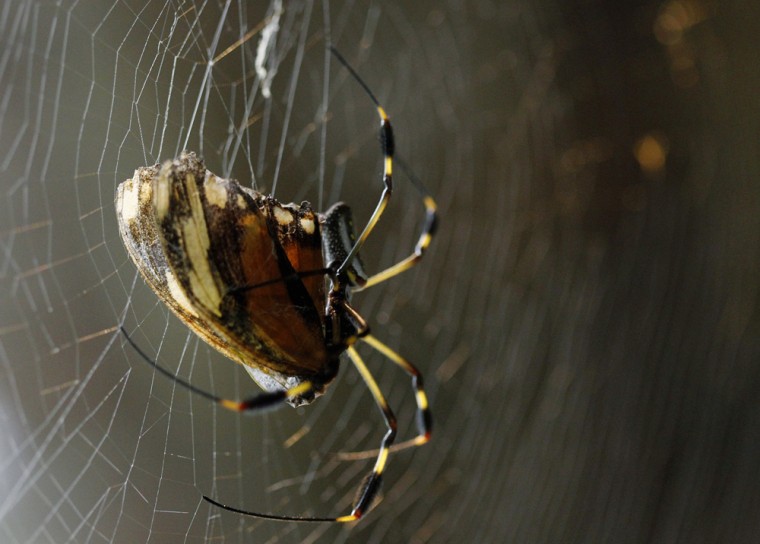
In "Spider-Man 2," the superhero uses his webbing to stop a runaway train from plunging off its track. The feat seems improbable, but the toughest of spider silks really are up to the task, according to a group of British college students.
James Forster, Mark Bryan and Alex Stone, fourth-year physics students at the University of Leicester, took it upon themselves to model the forces upon the webbing in such a situation and compared it to measured values on the stiffness and strength of real spider’s webbing.
Given a fully loaded train carrying nearly 1,000 passengers barreling down the track at top speed, they found that a spider web would have to stand up to 300,000 Newtons of force. This figure then allowed them to calculate the toughness of the web at 500 megajoules per cubic meter.
The students said this toughness is in line with the web from a Darwin’s Bark Spider — an orb weaver with the strongest known webbing of any spider.
“Having determined these parameters, it can be stated that Spider-Man’s webbing is a proportional equivalent of that of a real spider,” the trio conclude in a paper published in the University of Leicester’s Journal of Physics Special Topics.
The journal is published once a year by the university and is filled with short papers written by students in the final year of their physics degree program. It is an exercise meant to teach them about publishing and the peer-review process.
"Spider-Man has always been claimed to have the scaled up abilities of a spider and spiderweb has oft been quoted to be stronger than steel," Stone told NBC News via email. "We wanted to see whether or not Spider-Man's web, when pushed to its limits, was a reasonable facsimile of a real spider's web."
"In so doing, we also show what real spider's webs would be capable of if used on a larger, human scale," he added, noting that humans have recently gained the ability to produce spider-silk-like material at scale.
The three are far from the first physicists to get tangled up in the science of superheroes. James Kalkalios, a professor at the University of Minnesota, for example, recently created a new algorithm for cell regeneration that appeared in "The Amazing Spider-Man." He served as a science consultant for the film, released last year.
“Hollywood creators appreciate our contributions, for they realize that when the audience is questioning the physics of what they are watching or the authenticity of the laboratory set, that's a moment when they are not paying attention to the story,” he explained in an article for NBC News.
“The goal is not to ensure that everything on the screen is 100 percent scientifically accurate — which would, after all, defeat the purpose of the escapist fantasy we have paid our money to watch — but rather to get it just right enough to maintain the audience’s suspension of disbelief.”
John Roach is a contributing writer for NBC News. To learn more about him, check out his website. For more of our Future of Technology series, watch the featured video below.